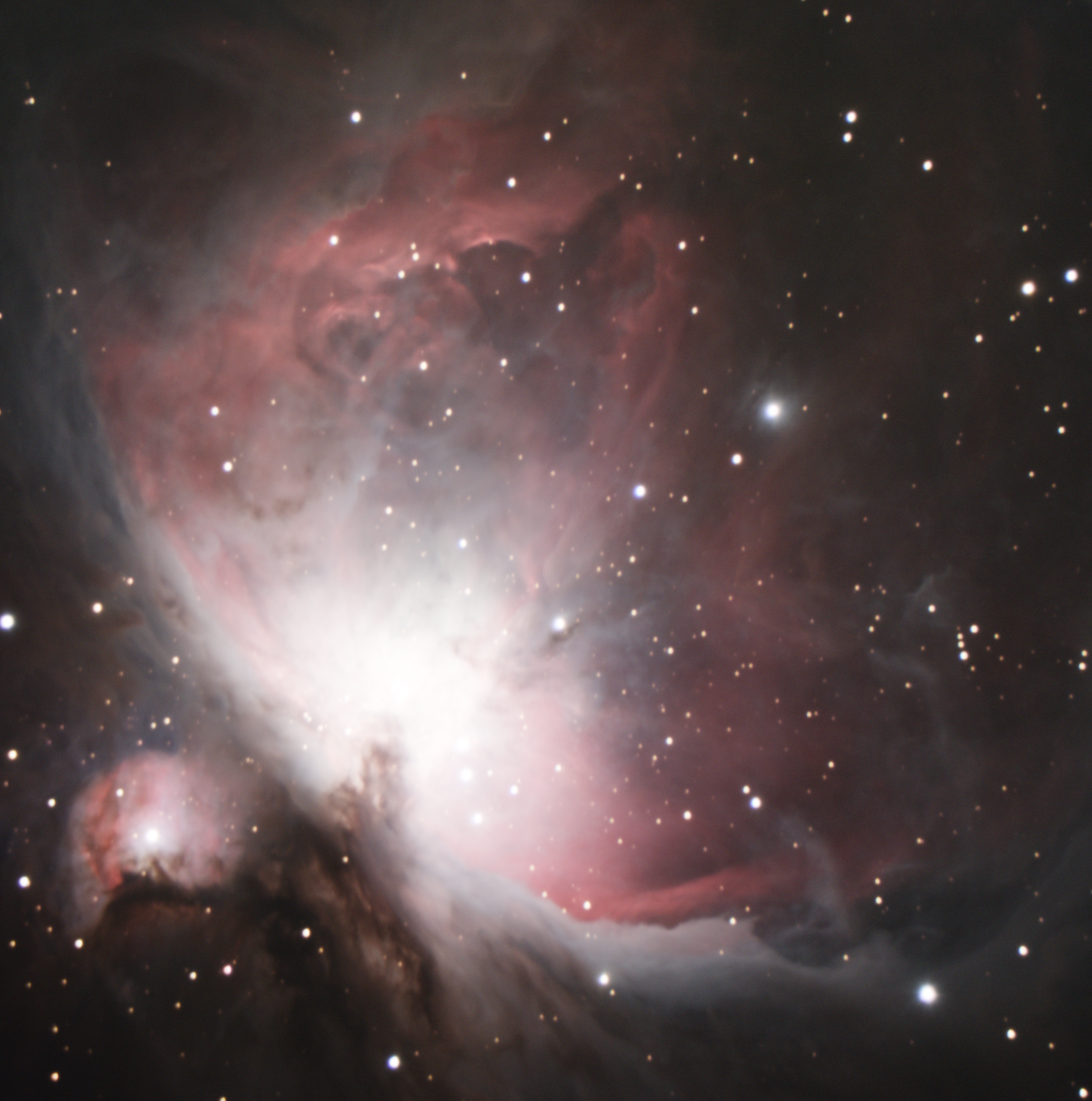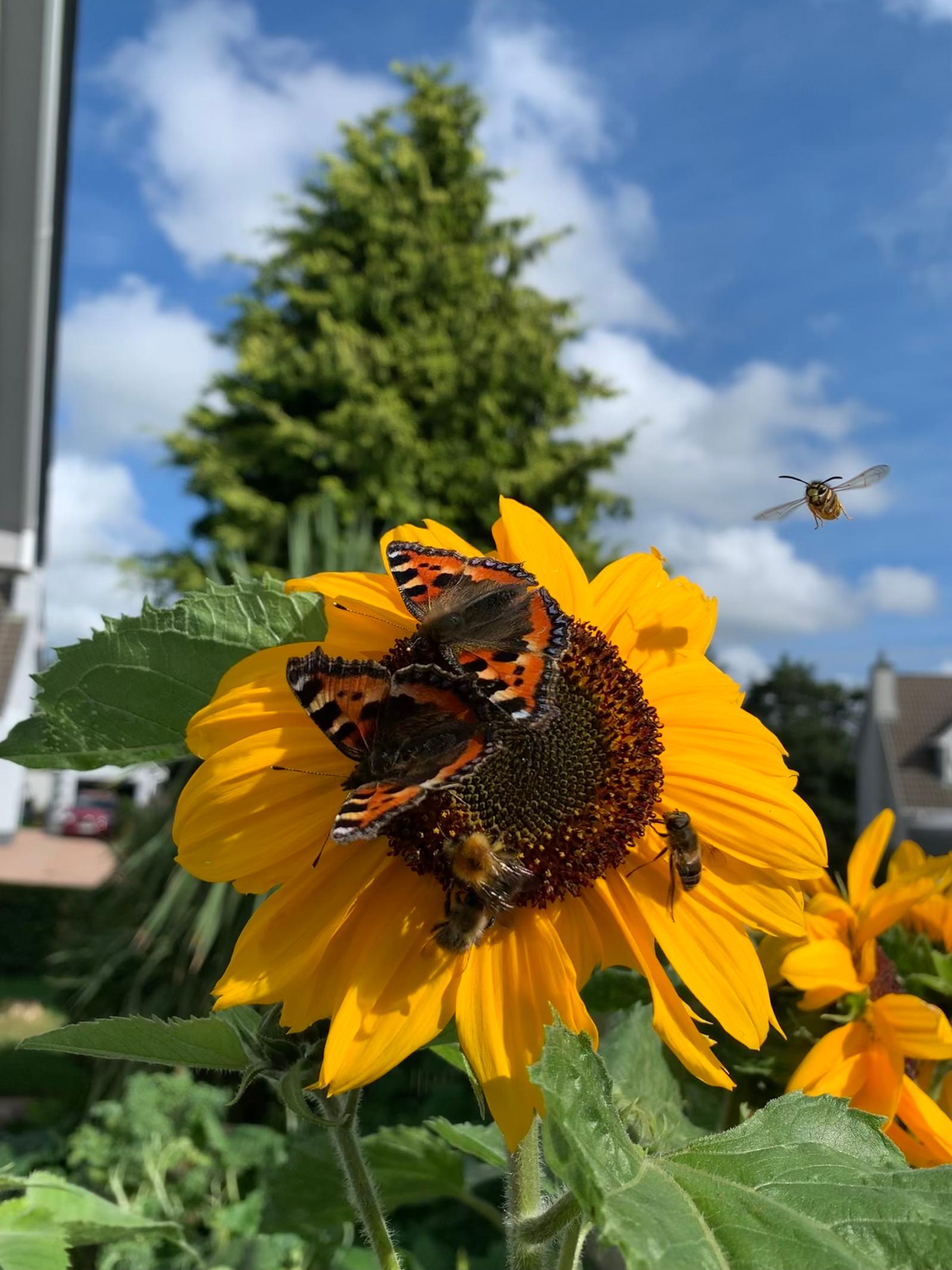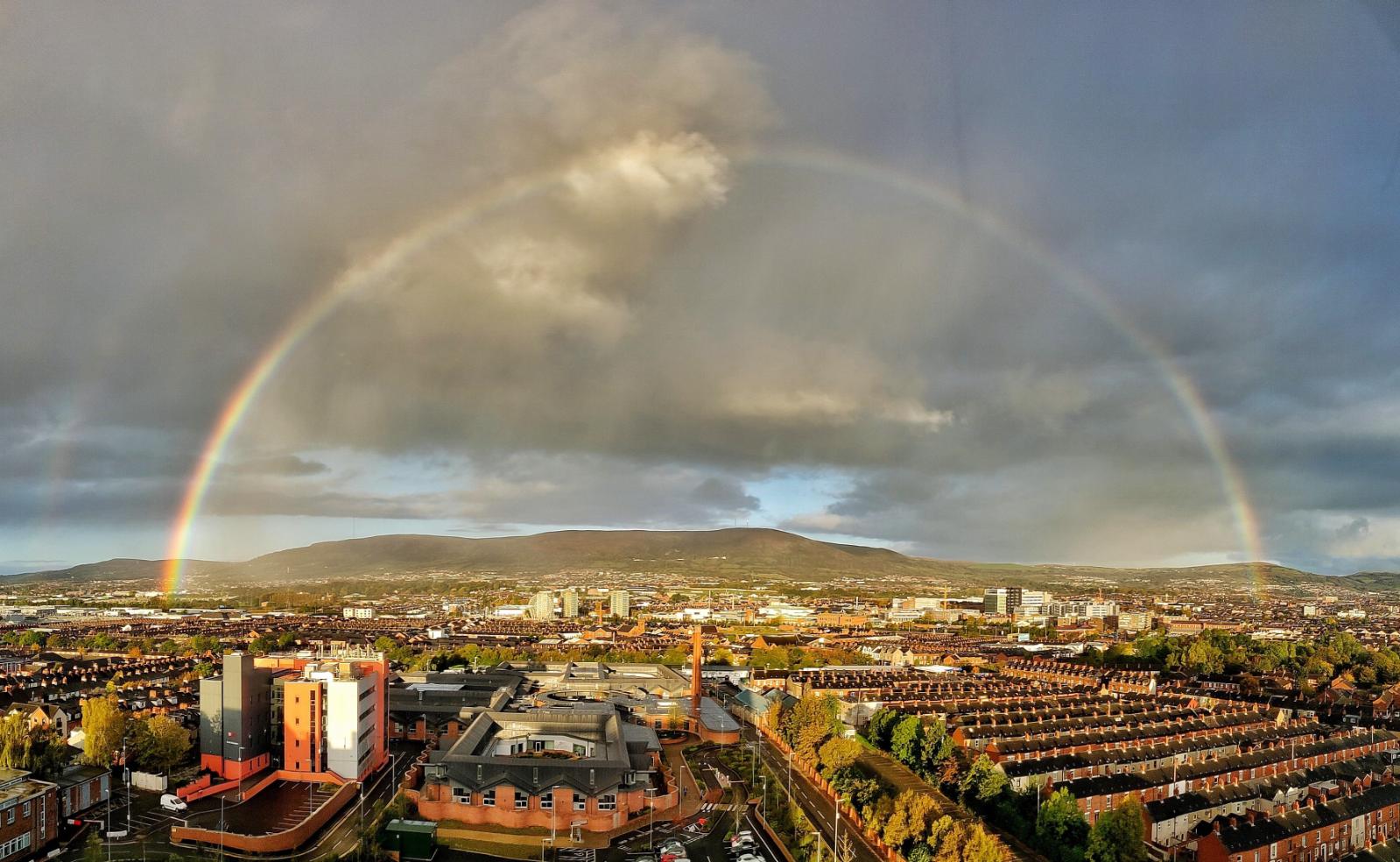STEM Photography Adults
Beautiful photos and insightful commentaries submitted by our Adult entrants - we hope you enjoy looking through them as much as we did!
This is the Orion Nebula, also known as Messier 42. It is visible by eye in the night sky as the middle “star” in the sword of the Constellation of Orion, but observation through a telescope reveals structures of gas and dust.
It is about 24 light years across, and the red colour is due to hydrogen ions recombining with electrons and emitting light. At the centre lies the Trapezium cluster of stars, which are currently in the early parts of their lives. The Orion Nebula is one of the most well-studied and photographed night-sky objects and has allowed astronomers to gain an understanding of how stars and planetary systems can form, as well as other physical phenomena such as the photo-ionisation of material in the nebula by massive stars.
This photograph was captured over the course of two nights using a 6-inch aperture Schmidt-Cassegrain telescope and cooled astronomical camera. It consists of 315 individual 40s exposure images stacked together to give three and a half hours of integration time. Light pollution effects were removed in post-processing via photometric colour correction.

Did you know that one in three bites of the food you eat are pollinated by the insects in this image?
Pictured here is a pollinators paradise on a warm July afternoon in our backyard. In the pursuit of nectar, insects such as bees, butterflies and wasps, are seen moving between flowers transferring pollen grains from one plant to another. This allows plants to be fertilised and produce the fruit and crops we eat.
However, increased use of pesticides and herbicides alongside habitat destruction, climate change and disease have led to a recent decline in pollinator populations. Their crucial role in food chains and ecosystems call for us to protect these insects at all costs. Everyone has a role to play in this and can make a difference by planting nectar rich flowers and shrubs in our gardens or providing nesting sites for bees. No matter how big or small, all efforts will help to ensure the future of our diverse food supply and survival of these beautiful creatures - trust me I’m not pollen your leg!

Being in Belfast everyone is aware how quickly weather can change in this part of the world. Apart from all the hassle that comes in our daily lives it also brings most spectacular phenomenon that happens when light and water play with science to create an art.
When sunlight enters the rain drop, it reflects some of the light made of many different wavelengths which further reflect in different angles. This spectrum is then separated to produce a beautiful pattern of mix of seven colors producing rainbow.
The above picture was taken from my window apartment from the 13th floor. One can see the double rainbow over west Belfast with Divis and the black mountain in the backdrop.

